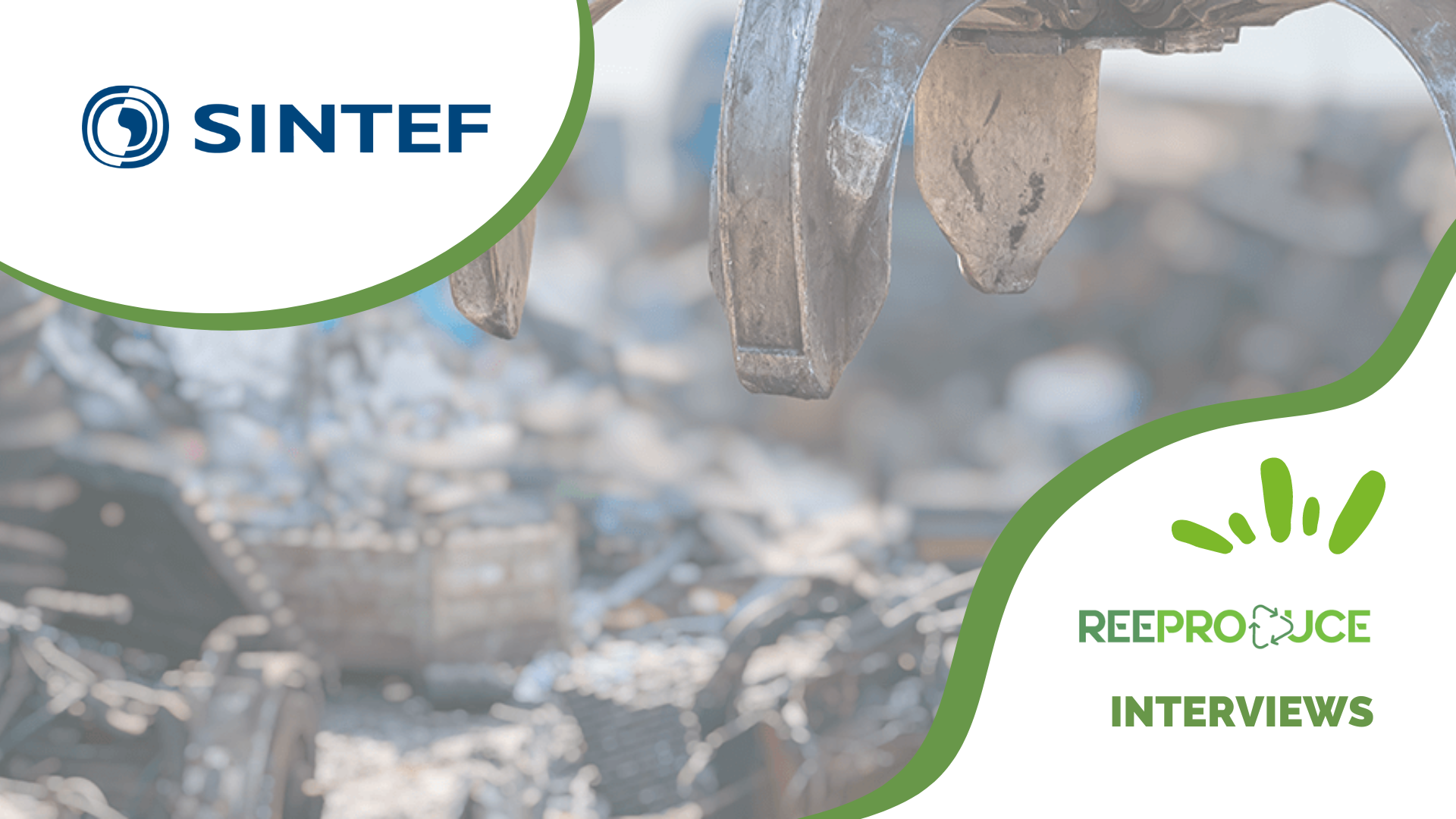20 Jun 2024
What is the role of the high-temperature electrolysis in the REEPRODUCE project?

SINTEF, coordinator of the REEPRODUCE project, has also a key role in the development of the high temperature electrolysis pilot to produce rare earth alloys for permanent magnets.
How important is the high-temperature electrolysis (HTE) process in securing a rare earth’s permanent magnet value chain?
This step is essential to obtain the rare earth (RE) metals for the permanent magnet manufacture, i.e., neodymium, didymium (mischmetal of Nd) and praseodymium, (Pr), or ferroalloys of dysprosium (Dy) and terbium (Tb). The HTE process converts the RE oxides into RE metals, and this step is often called “metallisation” by some stakeholders.
Could you explain in short the HTE process to obtain RE metals from their oxides?
The technology relies on an electrolytic process using graphite anodes and inert (tungsten, W) or consumable (iron, Fe) cathode materials, where the RE metal or the RE-Fe alloys are recovered in a liquid form. The electrolyte typically consists of aREF3-LiF mixture and RE oxide is the feed. In this context, the typical operating temperatures are ~ 1050 °C.
Is the high-temperature electrolysis process energy intensive?
The conversion from RE oxides to RE metals by electrolysis is energy intensive. This is not related to the working temperature, but rather to the fact that the RE oxides are very stable compounds, so the cell voltages needed are high, leading to high specific energy consumption. High temperature electrolysis processes, like the industrial Hall- Héroult process for aluminium production, are self-heated processes, despite working temperatures being ~ 1000 °C.
Self-heated process? How can this be possible when so high temperatures are needed?
Electrolysis processes produce thermal energy because of the Joule effect. Thermal energy generates a rise in temperature, thus the term Joule heating. This generated “heat” allows maintaining electrolysis working temperatures well above 1000 °C. This may seem difficult to achieve, but it is perfectly doable by developing an appropriate electrolysis cell design and parameters. We at SINTEF have a large experience in this field, in collaboration with industry partners, both in Norway, and worldwide.
Are there any other processes to obtain RE metals, rather than high-temperature electrolysis from molten fluorides?
The RE oxides are the end products of the ore processing and separation operations, and therefore the natural starting material to produce RE metal. As the RE oxides are extremely stable compounds, their reduction to metal is difficult and energy demanding. Apart from HTE, metallothermic reduction is also a process that is implemented at industrial scale. This process consists of using a highly reactive metal (typically calcium, lithium, and lanthanum metals) which at high temperatures (~ 1400-1500 °C) and pressure can reduce a RE halide(chloride and/or fluoride) into RE metal. Sometimes RE oxide can also be the raw material, but then highly reactive RE metal powder is obtained. Metallothermic reduction is carried out in harsh conditions of pressure and temperature, and they are highly exothermic reactions. Besides, it is needed to convert the RE oxides into halides (chlorides, fluorides) thus introducing one more step in the RE metal production process.
So, after all, the electrolytic process is far simpler than the metallothermic one, and therefore preferred to industrially produce RE metals needed for magnet manufacture, i.e., Nd, NdPr mischmetal, DyFe and TbFe.
What makes it REEPRODUCE’s HTE process unique from the State of the Art (SoA) industrial electrolysis process?
SoA HTE processes are meant to produce one single RE metal (or RE-Fe alloy when using a consumable Fe cathode) using the single RE oxide as feed. E.g., in case of Nd metal production, Nd-oxide is used as feed, and for DyFe alloy production, Dy-oxide is used as raw material, and so on.
SINTEF has developed an electrolysis technology, which is able to accommodate a mixture of RE oxides as feed, and gives a RE alloy as product, which can be used in magnet manufacturing. Currently, RE oxide mixtures obtained after primary and/or secondary RE containing resources are separated in energy intensive and environmentally unfriendly extraction methods. Thus, the REEPRODUCE’s HTE technology contributes to a more environmentally friendly and cost effective RE permanent magnet value chain.
Are there any similarities with the HTE process developed in the previously EU-funded REE4EU project (GA680507)?
REEPRODUCE capitalises from the knowledge generated in the REE4EU project, which demonstrated a closed loop permanent magnet recycling process at TRL7. The REE4EU’s HTE process was validated in an industrial relevant environment using RE oxide mix extracted from permanent magnet swarf (in-process waste) and spent permanent magnet of one single composition, as input material (2 tons in total).
For an economically sustainable European Nd-magnet recycling plant, the input material must be a large and wide variety of magnets’ chemistries, i.e., different RE contents (Nd, Dy, Ce….), coatings (Ni, Zn…), etc.
The innovative HTE technology developed in REEPRODUCE is flexible enough to be able to deal with different RE oxide mix input material, without compromising the quality of the output metal product. The robustness and flexibility of the REEPRODUCE’s HTE process lie on the optimised electrolysis process parameters, including electrolyte composition, temperature, current densities at the anode and cathode, feeding rates, and means of operating the electrolysis cell.